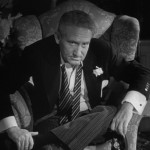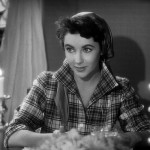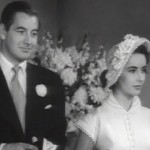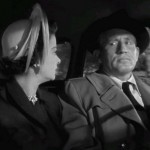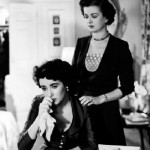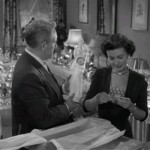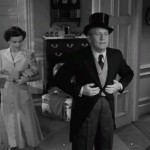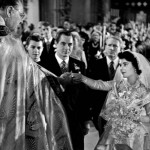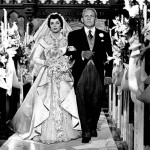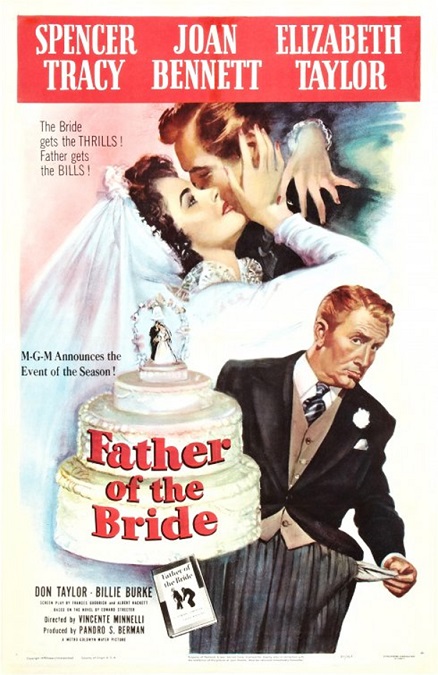
Father of the Bride – 1950
I’ll be honest. Father of the Bride was a bit of a disappointing movie. It wasn’t bad, but I was somehow expecting something more, and the problem is that I can’t exactly put my finger on what it was. Maybe my expectations were too high. I thought that since it had spawned a remake in 1991 starring Steve Martin, it was going to be something special. Unfortunately, it was an average film with nothing that stood out to me as extraordinary.
The film starred Spencer Tracy as Stanley Banks, a middle aged lawyer, and his loving wife Ellie, played by Joan Bennett. Their daughter Kay, played by Elizabeth Taylor, is, of course, getting married. The film is about exactly what the title implies. In fact, Stanley starts off the film by delivering his dialogue directly to the viewers, as if he is just chatting with them. The entire film is also punctuated with voice-over narration from Stanley.
The wedding, which was supposed to be a simple event, quickly gains momentum until it is an extravagant celebration with hundreds of guests in attendance. Then we find that there are two main conflicts. First is the financial burden which is placed on Stanley, giving the movie its comedy, and though Stanley never seems strapped for cash, he is always upset by having to spend it. After that is the conflict within Stanley, himself, as his only daughter is growing up and leaving the nest, which gives the movie its emotional content.
Unfortunately, by today’s standards, the movie just wasn’t very funny. It was cute enough but nothing that caused more than a slight chuckle. Instead, I found myself focusing on things like the differences in prices for the things purchased in 1950 as compared to today, or the fact that Ellie keeps insisting that more and more money be spent on a big wedding because she’d never gotten one herself. (Never-mind that Kay said, several times, that she just wanted a small wedding.)
No, the real heart of the film was Stanley’s struggle to come to terms with the fact that his little girl was no longer a little girl. In this, there were small moments of real emotion which Spencer Tracey did a fine job of portraying. Tracey always has a fatherly gentleness about him in just about every character I have seen him play. He was perfectly cast.
It is interesting to note that Tracey, who had a history of working with Katherine Hepburn, wanted her to play his wife, but the producers felt that they were too romantic a team to present the image of a common middle-aged couple.
Of course, there is the unsurprising scene in which Kay and her fiancée Buckley Dunstan, played by Don Taylor, have a fight over nothing. Kay comes home in tears and tells her father that she is calling the wedding off. But I was neither surprised, nor fooled. Within moments, Buckley is banging on the door, spouting apologies. They kiss and make up, and the wedding is back on. I had to roll my eyes at the predictability of the scene.
Elizabeth Taylor’s performance was good but not great. I’ve seen her do better, like in 1958’s Cat on a Hot Tin Roof, but I think that had more to do with the dry script than her skills as an actress. The character of Kay was shallow and one-note, but Taylor was able to cry on cue and she always had a youthful sparkle in her eye. And, of course, she was pretty attractive in those days, so she was at least nice to look at.
As I think about it, I guess the film’s biggest disappointment was its predictability. There were no surprises, no plot twists, and really, no conflict serious enough to make me care too much about the characters. It was an overly-wholesome, family-oriented film, so much so that it just came across as a little dull. Maybe it resonated more with fathers who had been through the experience of paying for a daughter’s wedding.
Still, I can see why it appealed to so many people. It was a snapshot of upper-class white society as they played out every young girl’s fantasy: a perfect white wedding with all the trimmings. It was, in the 1950s, the idealized version of what the perfect wedding was supposed to be like. I just don’t think it translates well to a modern audience. I wonder how the Steve Martin re-make modernized the story to make it more palatable.
And finally, I have to mention a little bit of interesting trivia which revolved around the personal life of Miss Taylor. The actress was going into the first of her eight marriages. In fact, her wedding was only two days before the film’s premiere. The costume designer that designed the wedding dress for the movie also designed Taylor’s dress for her real-life marriage to Nicky Hilton.
